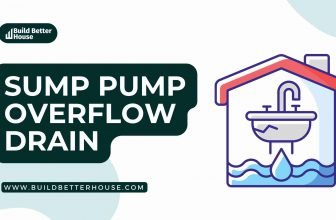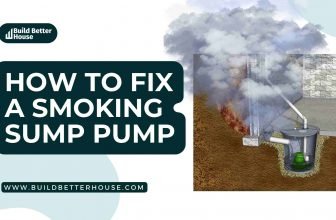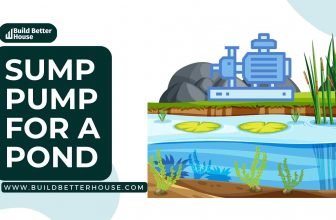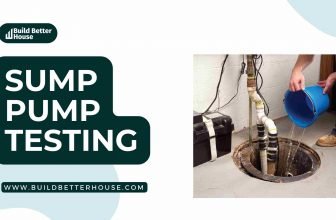Sump Pump Check Valve Failure Problem? Fix It Now
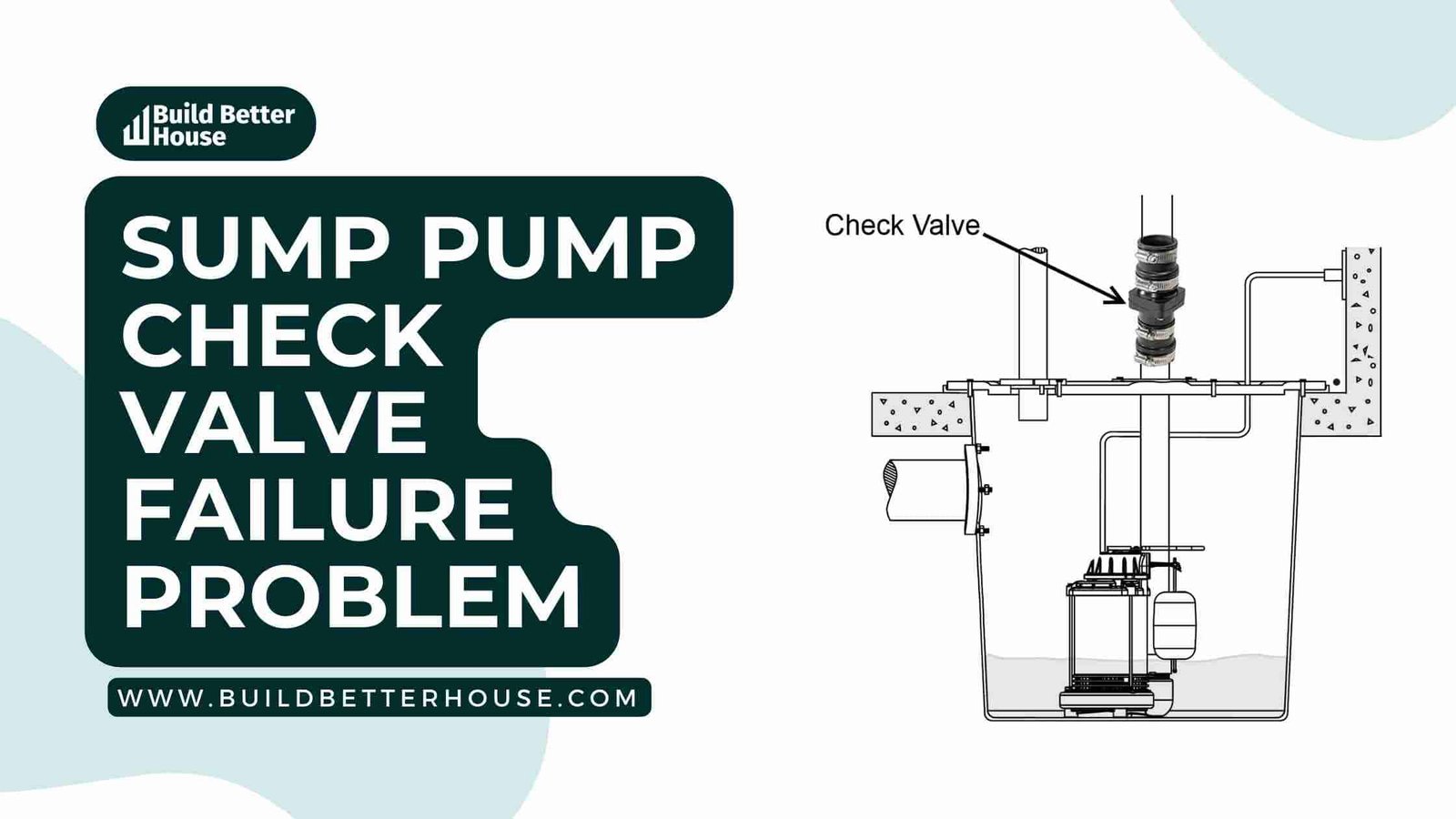
There needs to be more clarity about addressing the sump pump check valve failure problem. Sump pumps are neither showy nor thrilling, but they are a vital and regularly utilized home infrastructure.
A sump pump is an electric or gas-powered device installed in the basement as part of your home’s foundation. Its primary purpose is simple: When the water rises in the basement, it can cause damage to the house.
The sump pump helps mitigate this risk by transferring excess water outside your home through pipes or other methods.
Check valves are an integral component of any sump pump system; they help you avoid having to muck about in a muddy basement when it rains! So, how does this relate to you?
Even if you don’t currently have a sump pump installed, it may interest you for future renovations. That’s why we’ve come up with some handy tips on avoiding the sump pump check valve failure problems and maintenance practices you should follow if your current one has started failing.
Check Valve Basics
A check valve is an automatic valve used to control the flow of liquids, gases, and slurries in various processes. A check valve is installed vertically between the sump pit and the sump pump’s discharge pipe in a sump pump system.
The check valve is designed to allow water to flow in one direction only, from the sump pit to the discharge line to the outside. When the sump pump turns on, water is pulled into the pump and then travels through the discharge line.
The water will flow back into the sump pit without a check valve. A check valve is necessary to keep the water from flowing back into the house.
A check valve is installed at the end of the discharge pipe, preventing water from flowing back up the line into the sump pump.
A sump pump check valve comprises a flap that opens when water flows down the pipe and closes when water flows upwards. Only water pouring down the line can open and close the flap.
Why Does A Sump Pump Check Valve Failure Problems?
There are a few reasons why a sump pump check valve might fail. The most common are related to water pressure, corrosion, and a clogged flap.
When the water level in your basement is higher than outside, water will flow into the basement through the discharge pipe. This will create pressure within the line, forcing the water up and into the sump pump.
Normal water pressure outside the house does not exceed 8.9 PSI, but that number can exceed if your sump pump locates above a high water table or a flood zone. Corrosion can weaken the materials used in the check valve, making it more likely to fail. Placing the check valve in an area with a lot of water can also increase the risk of corrosion.
A clogged flap can cause the sump pump check valve failure problem because it cannot close properly. If a clog is blocking the flap from closing, the water pressure from the discharge pipe could cause the water to be pushed back up into the sump pump. To avoid corrosion, check the check valve and replace it if it shows signs of damage.
Warning Signs
To stay focused on your essentials, especially your housing, which will save you a lot of money and effort consumed shortly to keep them running well, you must examine them in detail. Here are some warning signs that can help you determine your sump pump check valve failure problems:
Water level is constantly rising
You can address your sump pump check valve failure problems by checking; If your sump pump is broken, it will allow water to come back into your house. Instead of the water level in the sump pit going down, it will constantly rise.
Keep an eye on the water level in the sump pit, particularly if you have a low sump pit or water is coming up through the floor drains.
Sump pump consistently runs with no end in sight
Also, you can answer your sump pump check valve failure problem by looking at the broken check valve, which will cause your sump pump to run continuously. If you notice your sump pump has been running for a long time without stopping, take it as a red flag and start troubleshooting.
The first thing to do is check the sump pit’s water level. If it’s rising, you may have a broken check valve or pump issue. You can stop your sump pump by cutting the power or pulling the plug.
Sump pump appears to be working harder than before
When the water level in your sump pit rises, but your pump is still running, it may be trying to compensate for a broken check valve. However, it is not designed for this and will eventually break down.
If your sump pump works harder than it used to, you should check the water level. You may have a broken check valve or a clogged sump pump whenever it is rising.
Hear a lot of clanking and scraping sounds when your sump pump is on
A broken check valve will cause your sump pump to work harder, so it’s normal to hear clanking and scraping sounds. However, if you hear these noises all the time, your pump may be clogged, or you may have a broken check valve.
You can access the check valve under the sump pump pit. If you notice it’s clogged, you must clean it. However, if it’s broken, it must be replaced.
Sump pump has been running for more than 15 minutes at a time without stopping
A broken check valve will cause your sump pump to run continuously or do an incomplete job. This is a dangerous situation so you must fix it as soon as possible.
When your sump pump has been running for more than 15 minutes, and the water level hasn’t gone down, you have a broken check valve or a clogged pump.
Water coming up through the floor drains instead of going down into the sump pit
Water will accumulate in the sump pit and perhaps rise through the floor drains when your sump pump check valve is damaged. However, a clogged sump pump is another potential culprit. The easiest option to learn is to turn off your sump pump.
You have a clogged pump if the water level in the sump pit stays the same. If it happens, a replacement check valve is required.
Tips To Repair The Sump Pump Check Valve Failure
A check valve failure can damage the compressor and create leaks. When a check valve breaks in the open position, air can leak from the header into the compressor, causing the compressor to spin backward. Try cleaning and repairing your sump pump check valve before replacing it.
Below are some tips that will help you to resolve the sump pump check valve failure problem:
- In case you are dealing with a clogged flap, you can use a long screwdriver or other long, thin object to unclog it.
- Whenever corrosion is causing the sump pump check valve failure, you can clean away the pollution using a scrubbing pad, vinegar, or a special corrosion remover. Once the corrosion removes, you can coat the parts with petroleum jelly or mineral oil to protect them from future decay.
- If the check valve brokes, it should replace as soon as possible. You can buy a replacement at most home improvement stores and install it yourself.
The process should take a few minutes, but check the packaging instructions to ensure you’re doing it correctly.
Consider installing a new sump pump system to resolve sump pump check valve failure problems. A new system will not only help resolve any issues you are currently experiencing, but it will also protect against future issues.
Prevention Is The Best Cure
Since the sump pump is vital to a well-functioning home, ensure it is operational numerous times during the year.
Groundwater often increases in early spring due to variables such as winter precipitation and snowmelt. As a result, late winter and early spring are the best times to maintain your sump pump.
Whenever your sump pump check valve fails, don’t let it happen again:
- Replace the check valve first; clean up the sump pit and discharge line. Once a month, inspect your sump pump for water or rust.
- Once a year, empty the sump pit.
Following the above pointer will prevent moisture from accumulating in the sump pit. You should also think about elevating your sump pump. This will assist prevent water from getting into the sump pit.
Summing Up
Sump pump check valves are essential to the house’s plumbing. They work by keeping water from entering a sump pump. A sump pump check valve failure problem can cause several reasons, including corrosion, water pressure, and clogging.
When your sump pump check valve breaks, you may detect water in your basement or hear your sump pump running more frequently than usual. Before replacing your check valve, consider cleaning and fixing it.
Read more:
Water Bubbles on the Ceiling – How to Fix It?
Fluidmaster vs Korky: Which Toilet Replacement Is The Best?
How to Fix Water Coming Out of Ground in Yard
How To Stop The Pool Pump From Making A Humming Noise?
7 Best Hot Water Recirculating Pumps in 2023: Tested & Compared



